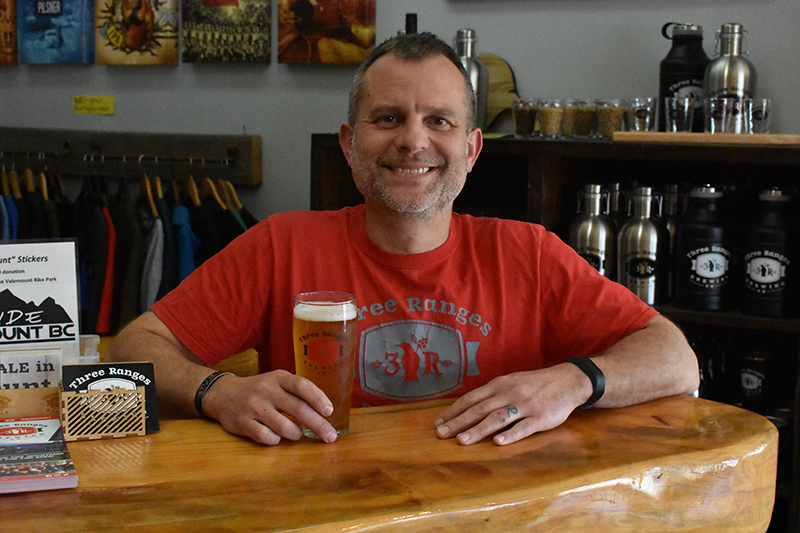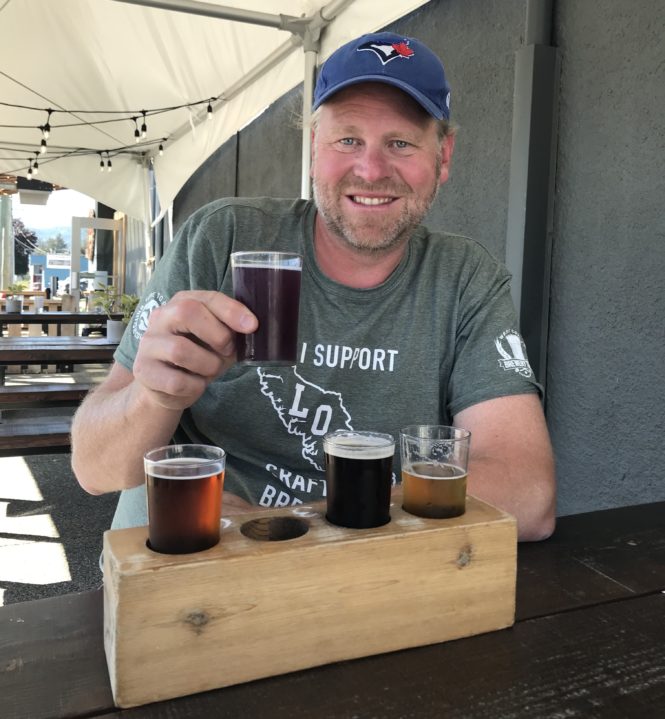
This story originally appeared in the Summer 2019 issue of The Growler, out now! You can find B.C.’s favourite craft beer guide at your local brewery, select private liquor stores, and on newsstands across the province.
Ask any brewer what their bestselling beer is and I’ll bet you a Fat Tug they say it’s their India pale ale, and often by a mile. Craft beer lovers seem to adore hops above all else, and brewers are racing each other to figure out how to stuff more and more hops into their beers.
IPAs have traditionally been assertively hopped pale ales: slightly stronger in ABV than its pale ale brethren, with a pronounced hop bitterness that helps balance the malt body. Legend has it, the style got its name because it was dry-hopped to help preserve the beer on the long voyage from England to the colonies in India. Once the style came to North America, the hops got cranked up to 11 with the piney, resinous varieties that are grown here on the West Coast.
However, since the arrival of New England IPAs on our coast a few years back, the spectrum of beers that fall under the IPA label has expanded considerably. First we had black IPAs and white IPAs, and then wild IPAs and fruit IPAs. Now there are hazy IPAs, juicy IPAs, hazy pales, hazy white IPAs, milkshake IPAs, hazy wild IPAs, hazy session ales, and brut IPAs. I hear sour IPAs are the next big thing.
But how can these all be called IPAs when they are so different? Sure, there are lots of hops in all those different beers, but they also use a wide assortment of malts, different types of yeasts, and often adjuncts such as lactose, flour or—wait for it—apple pectin. Doesn’t that make them a different style of beer altogether?
To explore this question I interviewed two brewers from either side of the province and the hazy spectrum: John Folinsbee, head brewer at Backcountry Brewing in Squamish, one of B.C.’s leading producers of the hazy IPA panorama of beers; and Michael Lewis, owner/brewer of Three Ranges Brewing in Valemount, whose Tail Slap IPA is the reigning champion of the North American IPA category at the B.C. Beer Awards, which means he knows a thing or two about brewing a classic West Coast IPA.

“I kind of stopped paying attention to official stylistic labels,” Folinsbee admitted right away. “Commercially, the word IPA is an incredibly successful sales tool. You slap IPA on a can of beer, whatever it is, and it sells better.”
Across the province, Lewis agreed that styles aren’t important to him as a brewer. “I don’t ever brew to style. I only call things a style to help a customer choose. We had our Boondocks Bitter and only sold two kegs, but I changed the name to an English Summer Ale and sold the rest out.”
While Lewis doesn’t love the hazy IPA style, himself, he appreciates that lots of people do. But he wants to make sure consumers know what they are getting when they order an IPA. After all, the difference between a West Coast IPA and a hazy is quite significant.
“When you look at your dry stout compared to your oatmeal stout, those are little nuances whereas I don’t think a hazy IPA is a little nuance,” he argued. “If somebody says I’m an IPA drinker and I hand them a Tail Slap, but if all they’ve had is a Twin Sails, they could be turned off.” (Twin Sails, if you’ve been living under a rock, is one of B.C.’s leading producers of hazy IPAs; the brewery even swept the category at the B.C. Beer Awards last fall.)
Folinsbee believes that the idea of a “hoppy beer” has definitely evolved.
“The target keeps moving as to what is and what isn’t considered hoppy any more,” he says. “Back in the day, IBUs and alcohol content were like a badge of honour. Now people are more interested in how a beer smells and tastes. It’s more about the overall hops presence in the beer.”

Lewis thinks about the consumer he faces in his taproom or “across the jockey box at events who asks ‘Is it hoppy? Is it bitter?’” His response: “No, it’s not bitter—it’s well-balanced.”
I like hop-forward, hazy beers a lot, but they remind me more of German hefeweizens or Belgian witbiers than traditional West Coast IPAs. Yeast plays a big role in all those styles, as does wheat and other non-traditional malts. Of course, the big difference is the hop presence, but then I’ve tasted a few hopfenweizens over the years that blur the boundary lines, too. Maybe we can just start calling them hazy ales and drop the IPA part. I doubt that will happen, though, given that both brewers I interviewed acknowledge that their IPAs—hazy or not—are their top-selling brands.
So what does the future hold for this trendy beer style with the name that doesn’t quite work but probably won’t change?
“We’re doing dry hop experiments all the time,” Folinsbee says. “It’s really just about experimenting and seeing what works. We’ll try something and see what it’s like and then change one variable at a time.”
Over in Valemount, Michael Lewis is experimenting, too: “We tried to do a hazy IPA with CrossRoads and it was clear as a bell. We couldn’t figure out how to do it.” Nonetheless, “it was a hugely popular beer. People really liked that big hop presence without the bitterness.”
Recommended hazy ales
• Backcountry Widowmaker IPA
• Boombox (pretty much everything)
• Category 12 “Data” series
• Parkside Dreamland and Humans
• Persephone Single Hop Hazy IPA series
• Philips Oceans Wise Hazy Pale
• Superflux (pretty much everything)
• Twin Sails (pretty much everything)




